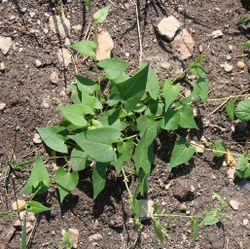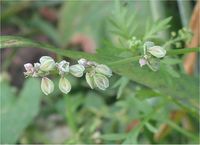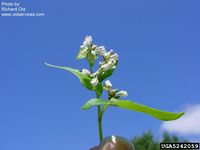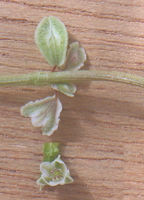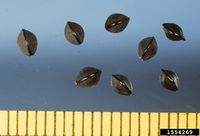Fallopia convolvulus (weed)
| Literature database |
|---|
| 150 articles sorted by: |
| • year (descending) |
| • research topics |
| • countries/regions |
| • affected crops |
| • list of natural enemies |
Fallopia convolvulus (weed) (L.) Á.Löve - (black bindweed)
This plant has a world-wide distribution in temperate and subtropical regions. It climbs around the stems of other plants and can be a serious weed of crops like cereals or root crops. Infestations can cause significant yield losses (e.g. see Odero et al., 2010). It may also harbour viruses that affect crops.
The plant has heart-shaped leaves and a long winding reddish-green stem with a total length of 1-1.5 mm. The tiny flowers (~ 4 mm) arise directly from the stem and have a very short pedicel and greenish white to light pink petals. Each flower produces a single, durable nut-like seed, around 3-5 mm long. The seeds are typically dormant for several years and spread via water, wind or birds.
| Vernacular names | |
|---|---|
| • Deutsch: | Windenknöterich |
| • English: | black bindweed wild buckwheat |
| • Français: | renouée faux-liseron |
Synonyms:
Bilderdykia convolvulus
Polygonum convolvulus
- Other images of Fallopia convolvulus (weed) (Wikimedia Commons and IPM Images - click to enlarge)
